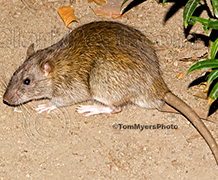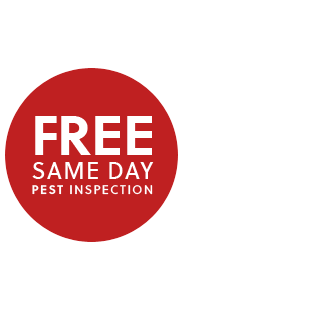Be aware of rodents in your home
 While many people are aware of the health risks posed by rodents, they are often surprised to learn that these unwanted visitors have an affinity for gnawing on electrical wiring in homes and cars, which puts those people at risk for a fire.
While many people are aware of the health risks posed by rodents, they are often surprised to learn that these unwanted visitors have an affinity for gnawing on electrical wiring in homes and cars, which puts those people at risk for a fire.
Rodents spend roughly three percent of their daily activity just gnawing on objects like wires — which sometimes causes issues that go undetected behind your home’s walls, or underneath the hood of your car.
The National Pest Management Association (NPMA) has declared October 21-27 National Rodent Awareness Week, and Clark, your neighborly pest control expert, would like to put the spotlight on rodents.
California and northwestern Nevada homeowners should be aware of the threats that rodents present, along with how to spot signs of an infestation and how to prevent rodents from being a problem in their homes.
Gaining access to your home or car, for rodents, is easier than you think. Rats and mice can squeeze through tiny openings and gaps – some as small as a dime.
Eight common signs of a rodent infestation include:
- Droppings: Rodent droppings are a sure sign that rats or mice are present, and will indicate the type of rodent, the size of the infestation, and where they are most active. Mouse droppings are small, less than one-quarter inch, and are pointed on both ends. Rat droppings are a half-inch or larger. New droppings are shiny and putty-like in texture, while old ones are hard and crumbly. Varying feces sizes indicate that juveniles and adults are present, and lots of droppings may be an indication of a large infestation.
- Urine odors: Rodent urine has a strong musky odor. With large infestations, you can easily smell it.
- Gnawed holes: Gnawed mouse holes are small, clear cut, and about the size of a dime. Gnawed rat holes are large, about the size of a quarter, with rough-torn edges.
- Rub and gnaw marks: Oily rub marks are left in places where rodents travel along walls. If rub marks smear, you know they are fresh. Gnaw marks on wood around the house also are a sign. Tooth marks about one-eighth-inch long are typical of rats, and small scratch marks are a sign of mice.
- Rodent runways: Common rodent pathways run generally along interior walls, building foundations, ledges, pipes, electrical wires, conduits, tree branches, and fence rails.
- Rodent nests: Mice will shred paper, string, and other pliable materials to build their nests indoors. Norway rats nest outdoors in burrows deep in the ground. Roof rats typically nest above ground in attics, trees, or dense vegetation.
- Scampering noises: Rodents are nocturnal. At night, they often create scratching sounds as they run inside walls and along floors.
- Unusual pet behavior: Pets tend to act unusual when they hear or smell rodents in the house. They may appear extremely alert, bark, or begin to paw at spaces beneath refrigerators, stoves, or low-clearance pieces of furniture.
How can you prevent rodents from threatening your home and family? Clark offers homeowners the following tips:
- Install door sweeps on exterior doors, and repair damaged screens.
- Screen vents and openings to chimneys.
- Seal cracks and holes on the outside of the home, including areas where utilities and pipes enter the home, using caulk and/or steel wool. Don’t forget to seal up points of entry into the garage.
- Store food in airtight containers, and dispose of garbage regularly.
- Keep attics and crawl spaces well ventilated and dry.
- Replace loose mortar and weatherstripping around the foundation and windows.
- Eliminate all moisture sites, including leaking pipes and clogged drains that provide the perfect breeding site for pests.
- Inspect items such as boxes, grocery bags, and other packages brought into the home or car.
- Regularly inspect under the hood of vehicles for gnawed materials, nests, droppings, or frayed wires.
- Store firewood at least 20 feet away from the house, and keep shrubbery trimmed and cut back from the house.
If you are experiencing problems with rodents in and around your home, call or text (800) WE-NEED-YOU or drop me an email at clarkcares@clarkpest.com.
Until next time, the pest management professionals at Clark Pest Control thank you for helping to keep unwanted pests out of your home.


